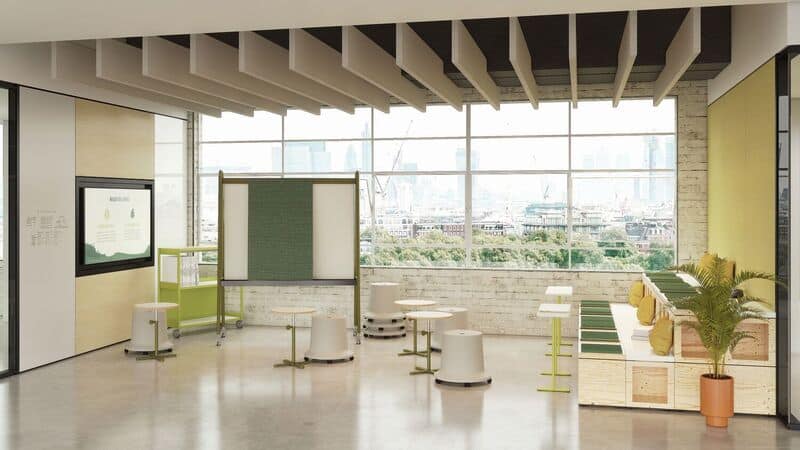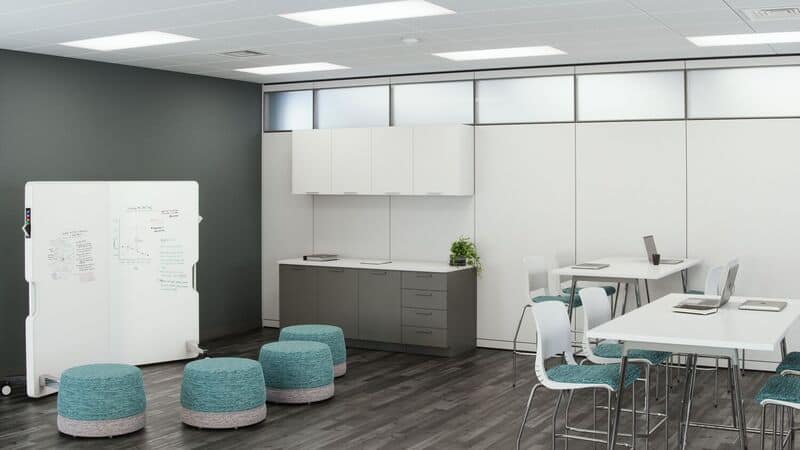The American Disabilities Act (ADA) is revolutionary for people with disabilities. Passed in 1990, the ADA prohibits discrimination against individuals with disabilities in all areas of public life, including all public and private spaces open to the general public. Requirements of the ADA have helped initiate more inclusive office design, including removing barriers that limit movement or access to people with disabilities.
If you’ve ever taken an elevator in a business with three floors or more, you have experienced the accessibility effects of ADA design. Features like this are ADA-regulated, meaning builders must follow controlled measurements and rules for specific areas, such as entryways and bathrooms. Interior designers also consider ADA specifications when planning interior features, such as furniture layouts and countertop heights.
So how inclusive is your office design? This may be a question you have yet to think seriously about, but it’s important to consider if you want to provide a work environment that benefits everyone and compete for talent in today’s workforce. After all, according to the Centers for Disease Control, as many as 1 in 4 adults in the U.S. have some form of disability, whether it be a visual or hearing impairment or a mobility or cognitive issue.
Interior Design and the ADA
The updated 2010 ADA Standards for Accessible Design law includes specific building design requirements to make public buildings accessible to people with disabilities. Interior designers who work on public structures are the most affected by the ADA’s requirements when working on new construction. For existing facilities, the regulations require that architectural and communication barriers.
How To Incorporate Accessible Office Design Into Your Space
Designing inclusive workspaces creates more opportunities for everyone to contribute and gives employees greater autonomy over where and how they want to work. As with any modern office design, versatility is critical. By incorporating accessible design into your workspace, your office design will be more inclusive, with more choice, comfort, flexibility, and inspiration for employees. Here are a few tips to ensure your office is ADA-compliant and accessible to all employees and visitors alike:

Open Up Your Floor Plan
Start by removing any obstacles that could prevent disabled employees from moving freely throughout the office. If you have an open floor plan, as many offices do today, your space may already be easy to navigate, but ask employees for feedback on improving accessibility even more. Widen doorways to at least 32″ in width, replace stairs with ramps, and ensure hallways and alcoves are spacious and free of hurdles.

Invest in Flexible Furnishings
Modular furniture that can be easily assembled and adjusted can be tailored to any space or individual, creating more accessibility for those with mobility issues and other special needs. Teknion offers a range of functional, comfy, and stylish flexible options that are aesthetically pleasing and convenient for everyone. The Tek Room, for example, makes it easy for wheelchair users to slot into the space effortlessly.

Use Ergonomic, Adjustable Accessories
Inclusive design ensures that all employees can reach different workspace areas and use equipment seamlessly. Invest in ergonomic chairs, desks, keyboards, and monitors that are easily adjustable and provide accessible storage and plug sockets for people of all heights. Teknion’s Modular Cabinet units are ADA-compliant, available with or without doors for complete access below the surface.
Designing an accessible and inclusive office space is crucial for both legal compliance and creating a welcoming environment. By incorporating open floor plans, widened doorways, ramps, and flexible furnishings, employers can ensure equal opportunities for individuals with disabilities. Investing in ergonomic, adjustable accessories further enhances accessibility. Prioritizing accessibility promotes inclusivity, empowers employees, and attracts top talent. An accessible office design reflects a commitment to equal opportunities and fosters a culture of productivity and innovation.
Book a tour of our showroom for a complimentary design consult.


